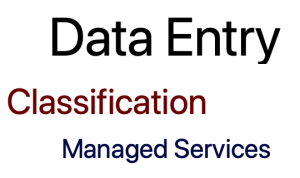Attendance management in educational institutes involves monitoring and recording the attendance of students, faculty, and staff to ensure compliance, track participation, and maintain accurate records. It plays a crucial role in promoting a culture of punctuality, accountability, and overall organizational effectiveness. Here are key considerations for effective attendance management:
Attendance Management for Admin
Attendance Management for Faculty
- Attendance Policies and Procedures: Establish clear attendance policies and procedures that outline expectations, rules, and consequences for non-compliance. These policies should cover aspects such as punctuality, absenteeism, late arrivals, early departures, and leave requests. Ensure that these policies are communicated to all stakeholders and easily accessible.
- Attendance Tracking Systems: Implement an attendance tracking system that suits the needs of the institute. This can range from manual methods, such as paper-based attendance sheets or sign-in registers, to automated systems that utilize technology such as biometric scanners, ID card swipes, or electronic attendance management software. Choose a system that is efficient, accurate, and aligns with the institute’s requirements.
- Timely Attendance Recording: Emphasize the importance of timely attendance recording by faculty, staff, and students. Ensure that attendance is recorded at the designated time and location. Late or inaccurate attendance recording can lead to data discrepancies and affect the overall effectiveness of attendance management.
- Attendance Monitoring: Regularly monitor attendance data to identify patterns, trends, and areas of concern. Keep an eye on absenteeism rates, tardiness, and any unusual attendance patterns that may require attention. This monitoring can help identify students who may need additional support or intervention.
- Absence Management: Establish a process for managing absences, including sick leaves, vacations, or other types of authorized absences. Define the procedure for requesting and approving leaves, and ensure that there is a mechanism in place to record and track these absences accurately. Consider implementing an automated leave management system to streamline the process.
- Intervention and Support: Monitor and identify students with frequent absences or irregular attendance patterns. Intervene early to understand the underlying causes and provide appropriate support. This may involve counseling, academic assistance, or working with parents/guardians to address the issues affecting attendance.
- Reporting and Communication: Generate attendance reports regularly to provide stakeholders with an overview of attendance patterns and trends. These reports can be shared with faculty, staff, students, and parents/guardians to promote transparency and accountability. Consider utilizing a student information system (SIS) or a dedicated attendance management system to generate comprehensive reports easily.
- Compliance with Regulations: Ensure compliance with applicable regulations and policies related to attendance management, including local laws, education board requirements, and government regulations. Stay updated on any changes in attendance regulations and adjust attendance management practices accordingly.
- Data Security and Privacy: Safeguard attendance data and maintain confidentiality. Implement appropriate data security measures to protect attendance records from unauthorized access or misuse. Comply with data protection laws and regulations governing the collection, storage, and sharing of personal information.
- Continuous Improvement: Regularly review and assess the effectiveness of attendance management practices. Seek feedback from stakeholders, evaluate the impact of interventions, and make necessary adjustments to improve attendance tracking and management processes.
Effective attendance management promotes discipline, accountability, and academic success. By implementing robust attendance management practices, educational institutes can ensure accurate records, identify and address attendance-related issues promptly, and create an environment conducive to learning and organizational efficiency.

